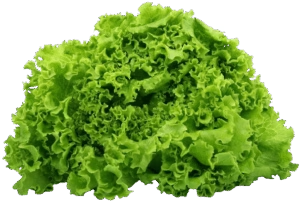TABLE OF CONTENTS
One of the infamous associations with vitamin D is its dependency on the sun, especially when it comes to humans. As such, it is often characterized as the ‘sunshine vitamin.’ However, we usually do not hear of it being touted as a skincare arsenal and that is where this article comes into play.
Vitamin D is a fat-soluble vitamin, that is, it can be absorbed in fats and oils. It is also a vitamin that is critical for the absorption of calcium and phosphate from the small intestines. Further, it is naturally produced by the body as a response to sun exposure and helps the body to re-absorb phosphorus from the kidneys.
Some of the benefits of vitamin D include its assistance in the growth and repair of the cells of the skin, optimizing the body’s immune system as well as destroying free radicals that can contribute to premature aging. You can read more about the skin here.
The Discussion
Vitamin D, the notable ‘sunshine vitamin’ is an essential fat-soluble vitamin that is required by the body for a plethora of benefits. One such is the absorption of calcium to maintain the body’s required calcium levels and hence bone mineral density (health.harvard.edu). As such, the main function of Vitamin D is to control the levels of calcium found in the bloodstream. However, for it to become useful to the body, it must be hydroxylated (a chemical process) by a protein enzyme (Institute of Medicine, 2010). Additionally, vitamin D is considered a scarce commodity, especially as it relates to daily intake, as it is not found in many of our foods.
Vitamin D can be found in fatty fish such as tuna, salmon and mackerel. It is also available in eggs and fortified foods such as cereals, some dairy and soy products as well as in fortified orange juices. You can also get your required daily intake from a nutritional supplement. But how can it help you with your skin?
In this article, we will discuss how vitamin D can assist with acne, skin metabolism and premature aging which is a factor in photo-ageing. However, unlike Vitamin C, vitamin D is not touted as being a skincare arsenal. Nonetheless, it is notably crucial for the protection and rejuvenation of the skin.
Once the body has its required levels of vitamin D, we can experience the benefits of this incredible nutrient in our skin. Some of the benefits include fighting acne; protection against photoaging as well as skin metabolism to withstand environmental factors such as low humidity, heat and airborne allergens which can ultimately affect the health of the skin (Yildizgören, et. al, 2015; Lim, et. al., 2016). So, bring on the sunshine, but sparingly. Let’s discuss!
Three (3) Major Skincare benefits of Vitamin D
- It May help with acne
- It May help with photoaging/Premature aging.
- It May help with skin metabolism.
Vitamin D and Acne
Acne is caused by several factors, one major one being inflammation, which is the result of a buildup of bacteria. One of the benefits of vitamin D is that it possesses both anti-microbial and anti-inflammatory properties that can perform two (2) of many things – fight bacteria that can lead to breakouts as well as soothe the skin (Yildizgören, et. al, 2015).
As such, having a sufficient amount of this vitamin in one’s diet can certainly be a wise choice, especially for those with acne-prone skin (Lim et. al, 2016). According to a study consisting of Eighty (80) patients who were acne sufferers as well as a control group of Eighty (80) healthy individuals, it was found that individuals with low levels of vitamin D (vitamin D deficient) had more acne breakouts by at least (48.8%) in comparison to those with higher vitamin D levels who experienced less breakout of 22.5% (Lim et. al, 2016).
The study further found that persons with vitamin D levels of 25(OH)D and who had an increased association with lesions caused by inflammation, saw their lesions significantly improved after supplementation of vitamin D (the amount per supplementation was not disclosed). Importantly, it must be noted that the study was conducted over a two (2) month period.
25(OH)D represents 25-hydroxyvitamin D and is the major form of circulatory vitamin D found in the body. As such, researchers and doctors alike always use this as a standard indicator of the level of vitamin D supply to the body either from cutaneous synthesis, food or supplemental intake (emedicine.medscape.com).
Lim et, al, (2016) findings were concurred by another study which was conducted with Forty-three (43) patients as well as a control group of Forty-six (46) participants. The average ages of the participants were 23 to 25 years. It was found that patients with nodulocystic acne which is a chronic form of acne caused by chronic inflammation, had lower levels of vitamin D, lower than 25(OH)D levels than the subjects in the control group. As such, the study concluded that there was a connection between low vitamin D levels and acne (Mastafa & Togral, 2015).
The recommended daily allowance of vitamin D is 1,000 IU. This was also the recommendation in most of the studies cited in this article.
Nonetheless, studies have proven to some extent that vitamin D deficiency was related to more acne issues while negating other factors that might influence acne formation. Suffice it to say, more studies were recommended as it pertain to the clinically relevant action of vitamin D development of acne as well as its therapeutic effect on acne (Yildizgören, et. al, 2015). Therefore, if you realize that you are breaking out more than usual and you are doing all the right things – eating healthy and exercising etc, then it wouldn’t hurt to check your vitamin D levels and see if that is the culprit.
Vitamin D and Photoaging/Premature aging
Photoaging is described as the chronic changes in the skin due to too much sun exposure (Pandel, et. al., 2013). Excess or prolonged exposure to the sun is cited as one of the main culprits in the premature aging of the skin. This happens without us even realizing it, until of course, the subtle signs of aging set in, such as dark spots, fine lines and wrinkles which begin to rear their ugly heads, especially as your age begins to fall off the calendar.
According to research, excessive exposure to the sun causes both direct and indirect DNA damage to the body as well as the breakdown of collagen in the skin. It also causes the activation of skin cell surface receptors keratinocytes and fibroblasts in the skin (Pandel et, al, 2013). This will ultimately affect the structural integrity of the skin which yields those visible signs of aging especially, wrinkle formation (Pandel et. al, 2013).
But how does photoaging differ from chronological aging, seeing that it could simply be a reflection of the aging process? Well, photoaging differs from chronological aging in that, while photoaging is a symptom of prolonged and excessive sun exposure; chronological aging is dependent on our physiological predisposition, and one that we just cannot control or stop. Even though some of us try to keep it fixed – the forever 29 or 39 years old 😊.
Some of the signs of photoaging other than dark spots and wrinkles include hypo or hyper-pigmentation, rough skin, skin dryness, the leathery appearance of the skin, precancerous lesions and melanoma (Yaar et, al, 2002; Gilcrest, 1990).
So how does vitamin D prevent photoaging? Studies have shown that low vitamin D does impact the levels of the photo-damaging effects of the sun. In addition, a study of Forty-five (45) women of Forty (40) years old, showed that low vitamin D levels were associated with hyper-pigmentation, wrinkles and profound photodamaged (Chang, et. al, 2010).
Nonetheless, while the sun has been cited as the main perpetrator of photoaging, other studies have denoted that factors, other than environmental ones play a role in the degree of premature aging. These include lifestyle factors, such as lack of sleep, diet, menopause, and smoking as well as chronic conditions such as diabetes and pulmonary diseases (Addor, 2018).
Vitamin D and skin metabolism
The skin consists of three (3) main layers, the epidermis, the dermis and the subcutaneous tissue. The epidermis is the outer layer of the skin and that part which we can feel and touch while the dermis is the second layer which is made up of collagen and elastin and is also about 20-30 times thicker than the epidermis. On the other hand, the subcutaneous is the third layer of the skin and is located beneath the dermis (Saladin, 2004).
The epidermis is considered a principal source of vitamin D for the body (Bikle, 2012). However, it is the keratinocytes that are within the epidermis that are responsible for the metabolism of vitamin D to its active form (D3 – cholecalciferol) so that it can benefit the cells of the skin. This, in turn, causes the skin to form permeability barriers as well as innate immunity (Bikle, 2012).
When the skin is aptly metabolized, it means that it can withstand certain detrimental effects, especially environmental factors such as the sun as well as bodily disorders which can lead to lasting ill effects not only on the body but the skin. However, research shows that melanin in the epidermis when it absorbs ultraviolet(UV) irradiation, can reduce the body’s effectiveness in producing vitamin D3 (the active form of vitamin D) from sunlight.
Persons with darker skin tones may have lower levels of vitamin D in the skin, especially those living in temperature latitudes – far from the sun (Bell, et. al, 1985). On the contrary, this same melanin can prevent the body from producing excess vitamin D3 via sunlight exposure which is a good thing, as too much vitamin D can lead to toxicity over time (Bikle, 2012).
You can read more about the skin and how to take care of it here as well as how to create a skincare regimen that works here.
Illustrative Summary
Here is an illustrative summary of the benefits of VITAMIN D to the skin.
Let’s Sum Up!
Vitamin D intake for skin health is not a popular notion like that of vitamin C or other skincare proponents such as peptides and antioxidants. However, it is a nutrient that is critical to our health both internally and externally.
Some of the benefits of vitamin D include the boosting and maintaining of healthy skin, the prevention and management of acne, photoaging or premature aging as well as skin metabolism. As such, when one is deficient in this essential nutrient, then this can cause the skin to experience these and other related side effects as shown by research. On the other hand, when an insufficient amount of vitamin D is present in the body, the effects are the reverse.
As such, an ample amount of vitamin D levels has been shown to not only protect the skin from environmental effects which can lead to the development of bacteria and acne formation but also premature aging. These are symptoms of excessive or prolonged exposure to the sun.
As such, the daily recommended intake of vitamin D is 1,000 IU. This was also the recommended amount which was announced by the American Academy of Dermatology and the Canadian Cancer Society. Further, adequate vitamin D levels in the body have also been shown to help in skin metabolism which helps to maintain the structural integrity of the skin.
Vitamin D is not one of those nutrients that are present in many of the foods we eat. Research shows that only a few food sources contain this notable nutrient. These include fatty fish (tuna, salmon etc), eggs as well as fortified foods such as cereals, some dairy and soy products and even store-bought orange juice. As such, the only natural source of vitamin D is sunlight. You can also get your daily intake via a good vitamin D supplement.
It is recommended that if you choose the route of supplementation, then a daily allowance of 1,000 IU should be sufficient unless otherwise directed by a healthcare professional. However, it is best to consult your healthcare provider before beginning any supplementation regimen to get the necessary guidance.
Try and ensure that you are getting enough of this nutrient, naturally without going overboard. Over time, with an overall healthy diet and active lifestyle, you will experience the skin of your desire even as the years pile on. So, how is your vitamin D intake?
You can read more on another great ingredient that is needed for glowing skin – Vitamin E. While you are at it, why not check out some of the ingredients you should approach with caution or just simply avoid.
- Vitamin E and the Skin – Three (3) major benefits worth knowing!
- Oh No! Not on my skin – Five (5) skincare ingredients to carefully examine or just avoid.
- Benzoyl Peroxide Vs. Salicylic Acid – What are they and How can they help with Acne and General Skincare?
Editor’s Note: Article updated: July 6, 2024.
- Addor F. (2018). Beyond photoaging: additional factors involved in the process of skin aging. Clinical, cosmetic and investigational dermatology, 11, 437–443. doi:10.2147/CCID.S177448.
- Bell NH, Greene A, Epstein S, et al (2012). Evidence for alteration of the vitamin D-endocrine system in blacks. Journal of Clinical Investigation. 1985;76:470–473.
- Bikle, Daniel D. (2012). “Vitamin D and the skin: Physiology and pathophysiology.” Reviews in endocrine & metabolic disorders vol. 13,1 : 3-19. doi:10.1007/s11154-011-9194-0. https://www.ncbi.nlm.nih.gov/pmc/articles/PMC3687803/
- Chang, A. L., Fu, T., Amir, O., & Tang, J. Y. (2010). Association of facial skin aging and vitamin D levels in middle-aged white women. Cancer causes & control : CCC, 21(12), 2315–2316. doi:10.1007/s10552-010-9646-y
- Gilchrest, B.A. (1990). Skin aging and photoaging. Dermatology Nursing, 2(2), 79-82.Institute of Medicine, Food and Nutrition Board. Dietary Reference Intakes for Calcium and Vitamin D. Washington, DC: National Academy Press, 2010.
- Lim, S. K., Ha, J. M., Lee, Y. H., Lee, Y., Seo, Y. J., Kim, C. D., … Im, M. (2016). Comparison of Vitamin D Levels in Patients with and without Acne: A Case-Control Study Combined with a Randomized Controlled Trial. PloS one, 11(8), e0161162. doi:10.1371/journal.pone.0161162.
- Mostafa, W. Z., & Hegazy, R. A. (2015). Vitamin D and the skin: Focus on a complex relationship: A review. Journal of advanced research, 6(6), 793–804. doi:10.1016/j.jare.2014.01.011
- Pandel, R., Poljšak, B., Godic, A., & Dahmane, R. (2013). Skin photoaging and the role of antioxidants in its prevention. ISRN dermatology, 2013, 930164. doi:10.1155/2013/930164.
- Saladin, K.S. (2004). Anatomy and physiology: the unity of form and function, 3rd edn. McGraw Hill, USA.
- Yaar, M., Eller, M.S., & Gilchrest, B.A. (2002). Fifty years of skin aging. Journal of Investigative Dermatology: Symposium Proceedings, 7(1), 51-58.
- Yildizgören, M. T., & Togral, A. K. (2015). Preliminary evidence for vitamin D deficiency in nodulocystic acne. Dermato-endocrinology, 6(1), e983687. doi:10.4161/derm.29799





